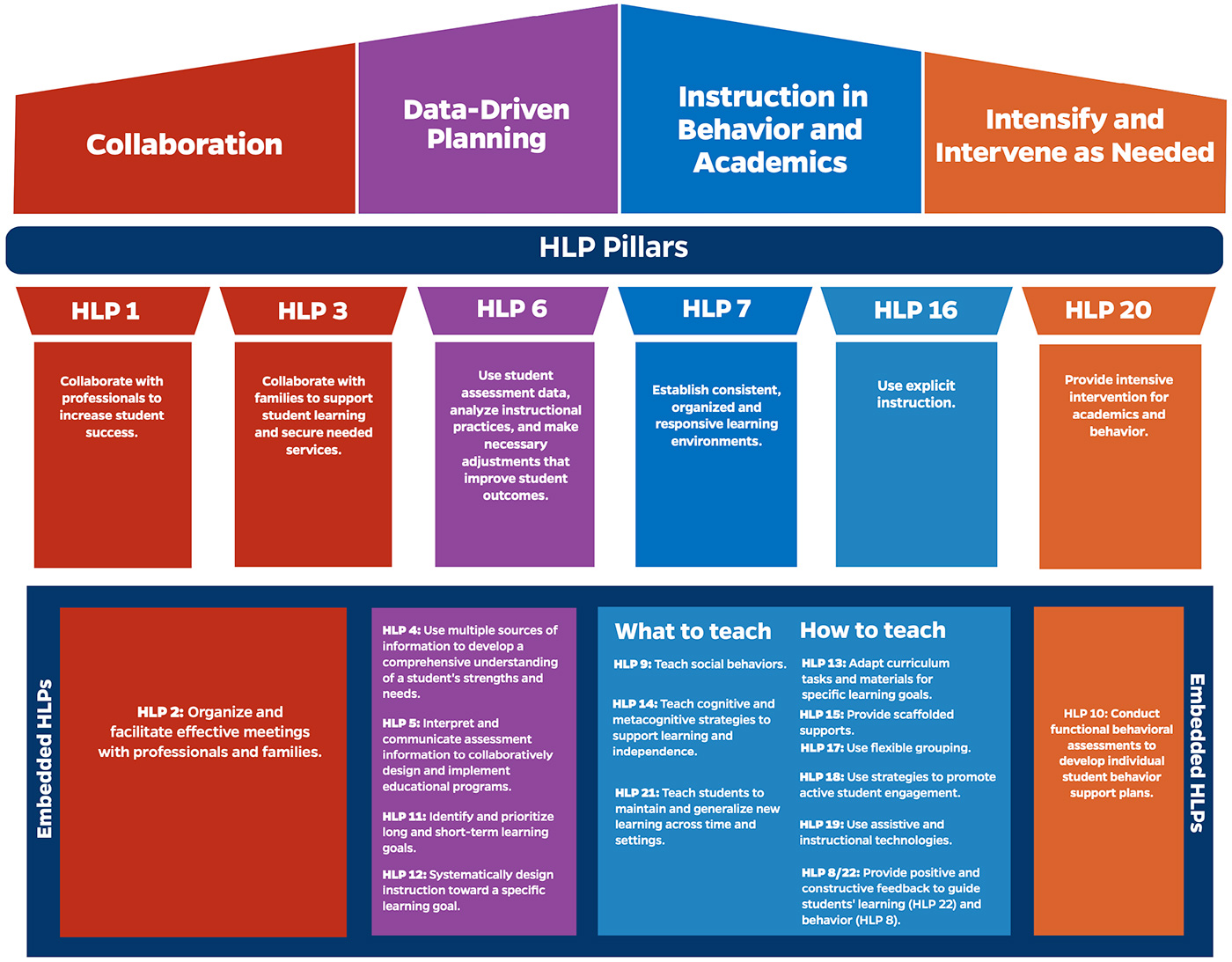High-Leverage Practices
Developed by the Council for Exceptional Children and the CEEDAR Center, high-leverage practices are 22 essential special education techniques that all teachers of students with disabilities should master for use across a variety of classroom contexts. Six of these practices are referred to as pillar practices—those most essential for educators to implement; and the remaining sixteen are embedded practices—those required to effectively support pillar practices. As noted in the graphic below, both pillar and embedded practices are categorized under four domains: Collaboration, Data-Driven Planning, Instruction in Behavior and Academics, and Intensify and Intervene as Needed.

View an enlarged version of this organizational structure and learn more about these practices in the guidance document High-Leverages Practices for Students with Disabilities.
This interactive alignment tool, developed in collaboration with CEEDAR and the Council for Exceptional Children (CEC), identifies which IRIS resources provide information on HLPs.
